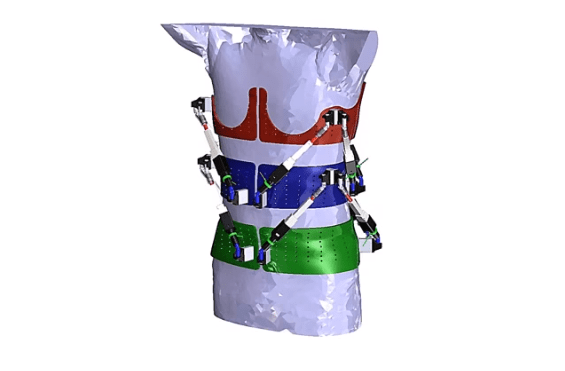Robotic exoskeleton brace analyses spine deformities
Researchers at Columbia University have developed a dynamic exoskeleton that measures the stiffness of the torso and could help treat spinal deformities such as scoliosis and kyphosis.

Known as RoSE (Robotic Spine Exoskeleton), the device consists of three rings placed on the pelvis, mid-thoracic and upper-thoracic regions of the spine. Attached to the rings are 12 limbs that feature a combination of actuators, joints and sensors. Through forces applied by these limbs, the robotic brace can analyse the condition of the spine, providing data that could be used to deliver corrective treatment tailored specifically to the needs of each wearer.
“The RoSE is the first device to measure and modulate the position or forces in all six degrees-of-freedom in specific regions of the torso,” said principal investigator Sunil Agrawal, professor of mechanical engineering at Columbia and professor of rehabilitation and regenerative medicine at the university’s Vagelos College of Physicians and Surgeons.
“To our knowledge, there are no other studies on dynamic braces like ours. Earlier studies used cadavers, which by definition don’t provide a dynamic picture."
Register now to continue reading
Thanks for visiting The Engineer. You’ve now reached your monthly limit of news stories. Register for free to unlock unlimited access to all of our news coverage, as well as premium content including opinion, in-depth features and special reports.
Benefits of registering
-
In-depth insights and coverage of key emerging trends
-
Unrestricted access to special reports throughout the year
-
Daily technology news delivered straight to your inbox










National Gas receives funding to develop Gravitricity underground hydrogen storage system
One single rock salt mine - Winsford - has 23 <i>MILLION </i>cubic metres of void and even allowing for 10% of that void set aside for hazardous waste...